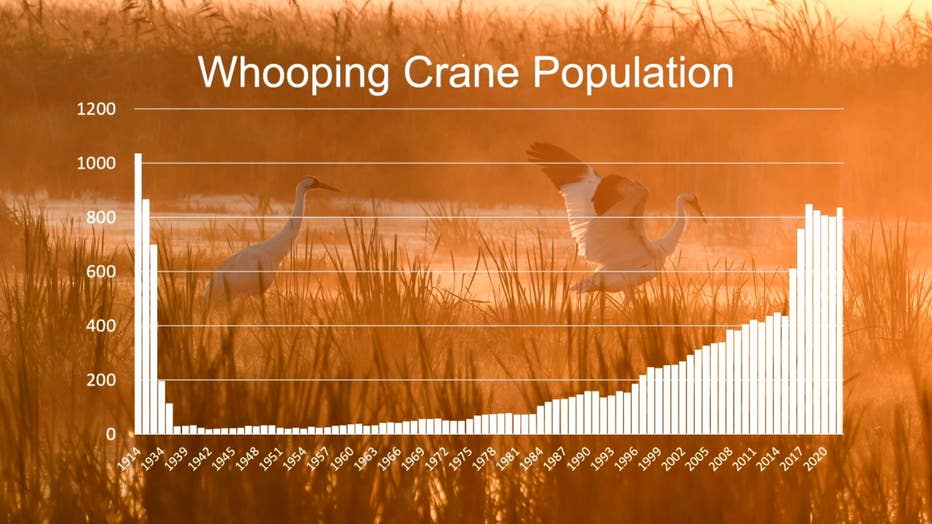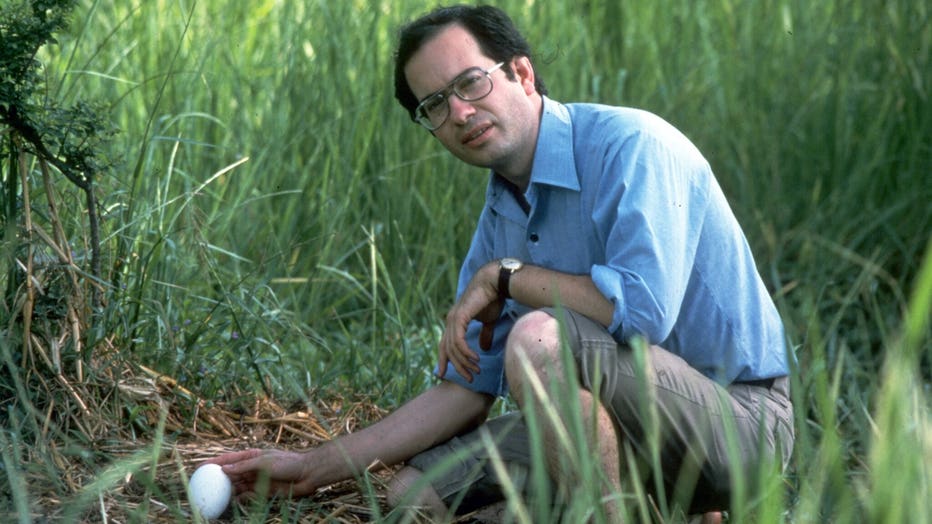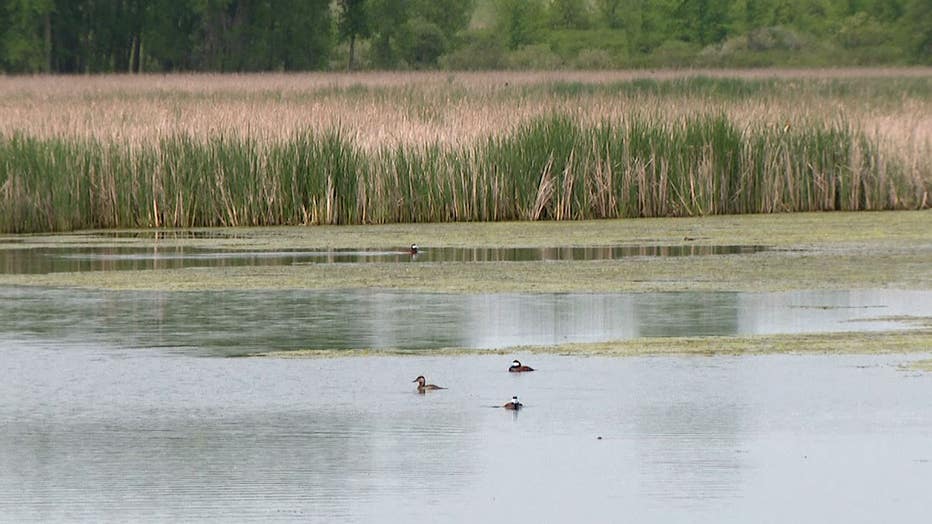Whooping cranes: Wisconsin home to America's tallest flying birds again

Whooping crane recovery in Wisconsin
Whooping cranes were once on the edge of extinction and one of the original endangered species. Thanks to the International Crane Foundation in Baraboo, their numbers continue to grow.
BARABOO, Wis. - You may have seen sandhill cranes before, but not many people have had the pleasure of seeing a whooping crane in person.
Whooping cranes nearly went extinct in the late 1800s and early 1900s because of unregulated hunting and habitat loss.
Their numbers went from an estimated 10,000 birds to less than two dozen by the 1940s, according to the International Crane Foundation (ICF). They were included in the original endangered species list that also had the ivory-billed woodpecker and the California condor.

Whooping Crane population from 1914 to 2022
Up to 5 feet in height with a call that can echo for hundreds of yards, it's a sight that might make you think you're hallucinating. But because of massive restoration efforts by the ICF, they might be spotted in a town near you one day.
"Wisconsin has a lot of its historical wetlands that cranes require for breeding, and great glacial soils, and so we farm right up to the edge of these wetlands, these are perfect for cranes – wetlands are key though," said Anne Lacy, the ICF North American Director
SIGN UP TODAY: Get daily headlines, breaking news emails from FOX6 News
The ICF was founded by George Archibald and Ronald Sauey 50 years ago – two graduate students at the time with a passion for cranes who knew something had to be done. Baraboo was chosen as the perfect introductory location for the species in the state, and the rest is history.
"In 2001 when we began our reintroduction process, Wisconsin is an incredible spot because we have seen so much wetland conservation here," said Stephanie Schmidt, ICF whooping crane outreach coordinator.
Since re-introduction, growth has been slow but steady. Chicks were hand-reared in captivity to assure minimal attack from the outside while also having dedicated staff in costume to ensure whooping crane colts only associated with their own kind.

Ronald Sauey, one of the original founders of the International Crane Foundation. (Courtesy: ICF)
Once the birds were large enough to be outside, they were put into large pens at existing wetlands. There, they are raised is the same location they return to year after year to breed. Establishing young birds at new locations is key to increasing the spread of their range.
Staff and volunteers in the early 2000s wrangled and led the young birds south to teach them how to migrate down to Florida. This was possibly the most complex part of the reintroduction, since they had to teach historic behaviors from scratch.
This is where dedicated ICF volunteer Doug Pellerin came in.

Crane puppet feeding young Whooping Crane. (Courtesy: ICF)
"When I hear them in the marsh they echo in the marsh, and it gets me right here, I just enjoy it," he said.
Using radio tracking, Pellerin follows the growth of chicks born in Wisconsin. He won't admit it, but it's very possible nobody has seen more wild whooping cranes in Wisconsin than he has.
One place you might find whooping cranes is right here in southeast Wisconsin. The Horicon Marsh in Dodge County is the single largest cattail marsh in the country. It's prime habitat for whooping cranes, and it is a location the birds have flourished since reintroduction.

Rudy ducks enjoying the Horicon Marsh National Wildlife Refuge
The main threats that still impact whooping cranes are power line collisions, illegal poaching and habitat loss. Fortunately, habitat loss has been slowed by wetland protections in the state, but high-quality wetlands are still at risk from pollution and invasive species.
With sandhill crane populations exploding to higher than historic numbers, some states allow the hunting of sandhill cranes.
"Our main concern about the sandhill crane hunt is, of course, our endangered whooping cranes," said Schmidt. "Sandhill cranes and whooping cranes spend lots of time together and look very similar and have some shared features."
FREE DOWNLOAD: Get breaking news alerts in the FOX6 News app for iOS or Android.
With still a long way to go, unlike sandhills, whooping cranes are nowhere near their historic numbers. Longer breeding cycles and larger habitat requirements are a big reason. But there is hope we're in the right direction.
Wisconsin is a huge piece in the species returning from the brink of extinction. People like Pellerin, Lacy, and Schmidt are a big part – but so are you in appreciating the beautiful bird.
Wisconsin whooping cranes; behind the scenes
The FOX6 photojournalists that helped Eric Manges put together the story sit down to discuss more about whooping cranes and what went into sharing the birds' story.
Behind the scenes
If you'd like to learn more about the story and whooping cranes we've included an additional sit down interview with the photojournalists that helped FOX6's Eric Manges put this together.

